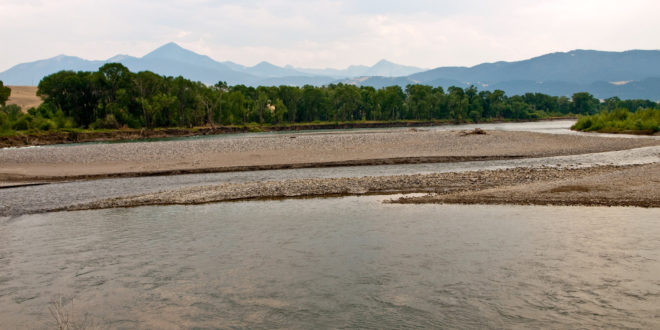A symposium in Livingston, Montana is discussing the future of the Yellowstone River after last summer’s alarming whitefish die-off.
Hosted by Montana Aquatic Resource Services, the Yellowstone River Symposium (ongoing today, April 28) together diverse stakeholders in hopes of reaching one goal—figuring out how to keep the Yellowstone River healthy in the years to come.
Last August, thousands of whitefish started turning up dead throughout the Yellowstone River, felled by Proliferative Kidney Disease, caused by a jellyfish-like parasite.
The Montana Fish, Wildlife & Parks department responded by closing 183 miles of riverway between Gardiner and Laurel, Montana—a move that took its toll on the local economy, especially among outfitters and hotels.
Yellowstone National Park did not close any portions of the river within park boundaries and used it as a teaching moment for anglers. The Yellowstone River reopened completely by late September 2016.
According to the Bozeman Daily Chronicle, the symposium (hosted at the Livingston train depot) showed some animosity between ranchers/farmers and tourist-related businesses:
Fish kept dying for the next several weeks, and the total death toll is estimated to be somewhere in the tens of thousands. The closure was lifted piece by piece over the next month, but tourism-dependent businesses still lost money.
On the other hand, pivots and wheel-lines were allowed to keep running. State officials said halting all irrigation wouldn’t have prevented the kill, but that didn’t stop some from claiming that farmers and ranchers who divert water for irrigation were part of the problem.
Druska Kinkie, of the E Bar P Ranch, was one of a few ranchers to attend the symposium. She said that might have something to do with raw feelings left over from last fall.
“Seeds of mistrust were sown and in the end our community lost a chance to address an issue in a calm and thoughtful manner with all stakeholders present,” Kinkie said.
Kinkie said she wasn’t sure how long it would take to repair the social damage caused by those accusations. But some want agriculture to be part of the solution, to have them at the table to talk about how they can help preserve the river.
Supporters of that sort of collaboration often cite the Big Hole Watershed Committee as an example. The committee has a drought plan that agricultural producers and fishing guides alike adhere to — one that requires irrigators to give up some water and fishermen to give up some days on the water.
Kinkie said the idea of “shared sacrifice” might be tough for some ranchers to swallow.
“If you’re being asked to give up part of your livelihood, that’s different than being asked to give up an ideal,” she said.
Travis Horton, regional fisheries manager for Montana FWP, called the rift “unjustified,” adding “the only solution there is working together and understanding one another and not vilifying one another.”
As one of the longest unmodified (more or less) riverways in the world, the Yellowstone River is a lifeline for many residents in Park and Gallatin Counties. Further, it’s an angler’s paradise, drawing visitors from all around the world. And although the park was unaffected by last summer’s closure, it’s nonetheless vital to stay vigilant—to keep the river’s pulse, as it were.
 Yellowstone Insider Your Complete Guide to America's First National Park
Yellowstone Insider Your Complete Guide to America's First National Park





